Pung Gyeong Hansikdang (풍경 한식당)
7.5Km 2024-02-28
1032 Baenae-ro, Sangbuk-myeon, Ulju-gun, Ulsan
Pung Gyeong Hansikdang is a Korean restaurant situated in Baenaegol Valley, often referred to as the Alps of Korea. The flagship menu items include Eonyang hanu bulgogi (Korean beef bulgogi), hanu beoseot jeongol (Korean beef mushroom hot pot), and yukhoe (beef tartare). Eonyang hanu bulgogi delivers a tender and flavorful taste, featuring domestically raised Korean beef. Hanu beoseot jeongol is a hot pot dish simmered with Korean beef and various mushrooms. Yukhoe stands out with its impressive chewy texture and rich flavor. In addition to these specialties, the restaurant offers classic options such as bibimbap and kimchi jjigae. Alongside its dining services, the restaurant operates a pension and café.
Ulsan Petroglyph Museum (울산암각화박물관)
9.7Km 2021-02-22
254, Bangudaean-gil, Ulju-gun, Ulsan
+82-52-229-4797
Ulsan Petroglyph Museum was established on May 30, 2008 at the entrance to Petroglyphs of Bangudae Terrace (National Treasure No. 285) in Ulju-gun. The museum displays 311 exhibit materials and has an exhibition hall, a storage room, a research lab, and an audiovisual room.
The exhibition hall presents models of petroglyphs of Bangudae and petroglyphs of Cheonjeon-ri (National Treasure No. 147), an educational video introducing the petroglyphs, a children’s hall, and family activity facilities. Visitors can observe reproductions of famous petroglyphs at the outdoor exhibit.
Petroglyphs of Bangudae Terrace in Daegok-ri [UNESCO World Heritage] (울주 대곡리 반구대 암각화 [유네스코 세계유산])
9.8Km 2025-07-18
Daegok-ri, Eongyang-eup, Ulju-gun, Ulsan
In Daegok-ri, Eonyang-eup sits Bangudae Terrace, a picturesque spot where a ridge of Yeongosan Mountain extends to and stands tall to form quite a spectacle featuring uniquely shaped rocks and cliffs. The name, Bangudae, comes from how it resembles a turtle lying prone on the ground. Petroglyphs are paintings drawn by people from the prehistoric times carved on rocks and depicting various scenes and events in their daily lives. Petroglyphs were often drawn on enormous rocks and other sacred locations of groups, and it is believed that people gathered around them to hold various rituals.
Petroglyphs of Bangudae Terrace in Daegok-ri, Ulju-gun are estimated to have been drawn over several periods since the New Stone Age, and visitors can observe the differences in styles among various ages. Primary objects that were popularly carved include sea animals, land animals, humans and tools and, as our prehistoric ancestors actively engaged in hunting, the hope of abundance in game is believed to be the reason why these objects were frequently carved on rocks. Vividly expressing animals and hunting scenes and colorfully depicting outstanding traits of objects, these petroglyphs are a form of both hunting art and religious art, and they are considered as the greatest masterpieces that give a peek at the life and customs of the prehistoric ages. The petroglyphs on the Bangudae Terrace and the petroglyphs in Cheonjeon-ri, spanning three kilometers altogether along the Bangucheon Stream, have been inscribed on the UNESCO World Heritage List on July 12, 2025.
Seongnamsa Temple (석남사 울산)
9.8Km 2020-03-17
557, Seongnam-ro, Ulju-gun, Ulsan
+82-52-264-8900
The name of the temple is believed to have originated from the fact that it is located south of Gajisan Mountain or Seokansan Mountain. Built in 824 A.D. (during the 16th year of King Heondeok’s reign), the temple was destroyed during the Japanese Invasions of Korea (1592-1598) and rebuilt in 1674 (during the 15th year of King Hyeongjong’s reign). Since then, it has gone through rebuilding several times. Consisting of 30 buildings, the temple is home to many Buddhist nuns.
Seongnamsa Three Story Pagoda (Local Tangible Cultural Property No. 5) was built in 824 A.D. by Monk Doui, reflecting his wish of protecting the country from foreign invasions. The pagoda was initially placed in front of Daeungjeon, but moved to the current location in 1973. Other notable relics in the temple include the Statue of Monk Doui (National Treasure No. 369), Three Story Sarira Pagoda, and Stone Water Tank (Cultural Property Material No. 4).
Miryang Eoreumgol Valley (밀양 얼음골)
10.0Km 2020-08-25
1647, Sannae-ro, Miryang-si, Gyeongsangnam-do
+82-55-356-5640
Just north of Jaeyaksan Mountain, Eoreumgol Valley (Ice Valley) sits at an elevation between 600 and 750 meters and covers an area of 29,752m². Designated as Natural Monument No. 224, the valley is unusual in that it begins to freeze in March when the weather becomes warm and thaws in the fall when the weather becomes cold. In the winter, the valley generates warm breezes and the water rarely freezes. Because of these unique attributes, the valley is considered one of the Four Mysteries in Miryang and attracts visitors from early summer through fall.
Hobaksogyegok Valley (호박소계곡)
10.2Km 2025-01-08
334-1, Eoreumgol-ro, Miryang-si, Gyeongsangnam-do
+82-55-359-5361
Hobaksogyegok Valley is located within Gajisan Mountain approximately 3 kilometers away from Eoreumgol Valley in Jaeyaksan Mountain, where the water originates. The valley offers beautiful surroundings and clear water developed over the years. Hobakso Pond, shape like a grain-grinding tool, is located at the base of a 10-meter-high waterfall. With a circumference of 30 meters, the pond is also called Sirye Hobakso Pond, Guyeongpokpo Falls, and Baengnyeonpokpo Falls. In the past, the pond was a spiritual place where people would pray for rain. Surrounded by white granite rocks, the area is a scenic place of natural beauty, free from pollution. Visitors can also look around nearby Baengnyeonsa Temple, Hyeongjeso Pond and Ocheonpyeong Rock.
Ever Miracle Hotel [Korea Quality]에버미라클호텔[한국관광 품질인증]
10.3Km 2023-05-23
358-9, Eoreumgoryet-gil, Miryang-si, Gyeongsangnam-do
+82-55-351-0100
Ever Miracle Hotel in Miryang, Gyeongsangnam-do, provides guests with a sojourn that rests and relaxes both body and mind. Visitors are welcome to stop and enjoy a healthy meal and some down-time from their busy lives.
Ulsan Daegok Museum (울산대곡박물관)
10.5Km 2021-05-18
257, Seohacheonjeon-ro, Ulju-gun, Ulsan
+82-52-229-4787
Ulsan Daegok Museum displays artifacts that were uncovered from the area of Daegok-ri during the construction of Daegok Dam. Approximately 13,000 relics were excavated during land inspection prior to the dam construction, including Hasamjeong Ancient Tomb. These findings were collected and became available for public display when the museum opened on June 24, 2009.
Petroglyphs of Cheonjeon-ri [UNESCO World Heritage] (울주 천전리 명문과 암각화 [유네스코 세계유산])
10.6Km 2025-07-18
Cheonjeon-ri, Dudong-myeon, Ulju-gun, Ulsan
The petroglyphs (figures, pictures, and letters were made on the rocks along the mid-stream area of Naegokcheon Stream, which is a tributary of Taehwagang River. The upper and lower sides of the rocks contain petroglyphs that differ in the content and techniques used. The upper side contains petroglyphs made by means of chiseling. The inscriptions include geometric patterns, animals, and abstract human figures. There are concentric circles, with a round figure looking like the sun at the center, four running deer next to them, and several semi-human animals. The figures with simplistic expression and symbolism appear to have been made during the Bronze Age.
The lower side contains line-drawn picture mixed with Chinese characters. They include a procession of horse riders, animals including dragons, and boats. In particular, the procession of horse riders appears in three different places. The boats provide researchers with important information on the offshore activities carried out by people of the Silla dynasty. The 800-plus written characters are about the King and Queen’s visit to the place. They were presumed to have been inscribed on two occasions during the reign of King Beopheung (r. 514-540) of the Silla dynasty. The content on the official positions and the government system makes it a precious material for those studying Silla during or around the 6th Century. The petroglyphs were made by many people over an extended period of time, providing vivid information on the life and thoughts of people from prehistoric times to the Silla dynasty.
The petroglyphs in Cheonjeon-ri and petroglyphs on the Bangudae Terrace, spanning three kilometers altogether along the Bangucheon Stream, have been inscribed on the UNESCO World Heritage List on July 12, 2025.
(Source: Korea Heritage Service)
Gajisan Provincial Park (Miryang Section) (가지산도립공원(밀양))
10.6Km 2021-05-31
Sannae-myeon, Miryang-si, Gyeongsangnam-do
+82-55-359-5357
Situated 1,240 meters above sea level, Gajisan Mountain is famous for its beautiful stones and rocky peaks. There are a variety of things to see on the mountain besides the beautiful stones. In fall, the pampas grass provides a spectacular sight as the whole mountain peak is covered in autumn colors. The mountain attracts many hikers wanting to see oddly-shaped rocks like the famous Ssalbawi Rock.

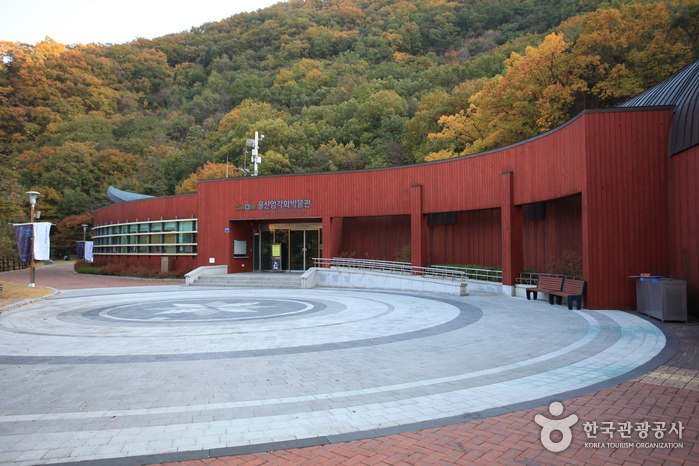
![Petroglyphs of Bangudae Terrace in Daegok-ri [UNESCO World Heritage] (울주 대곡리 반구대 암각화 [유네스코 세계유산])](http://tong.visitkorea.or.kr/cms/resource/29/2675629_image2_1.jpg)
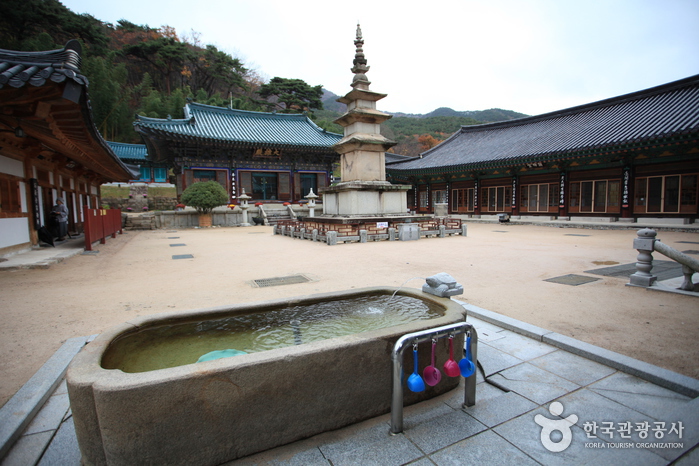
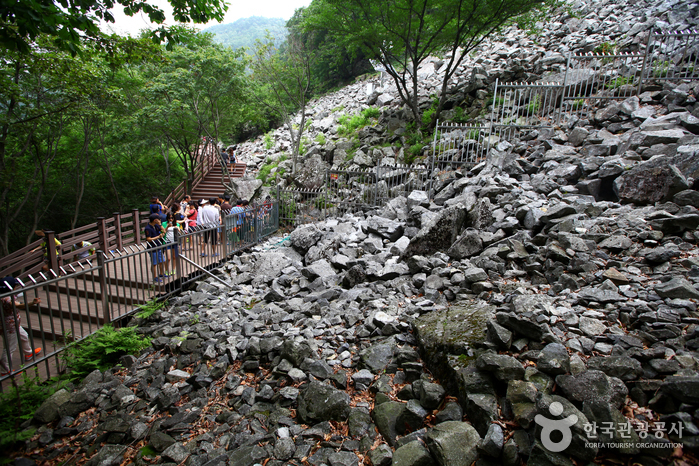
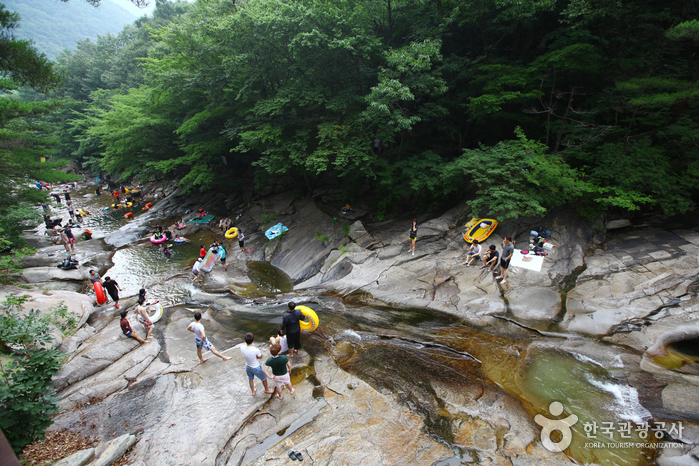
![Ever Miracle Hotel [Korea Quality]에버미라클호텔[한국관광 품질인증]](http://tong.visitkorea.or.kr/cms/resource/06/2801906_image2_1.jpg)
![Petroglyphs of Cheonjeon-ri [UNESCO World Heritage] (울주 천전리 명문과 암각화 [유네스코 세계유산])](http://tong.visitkorea.or.kr/cms/resource/14/3335114_image2_1.jpg)
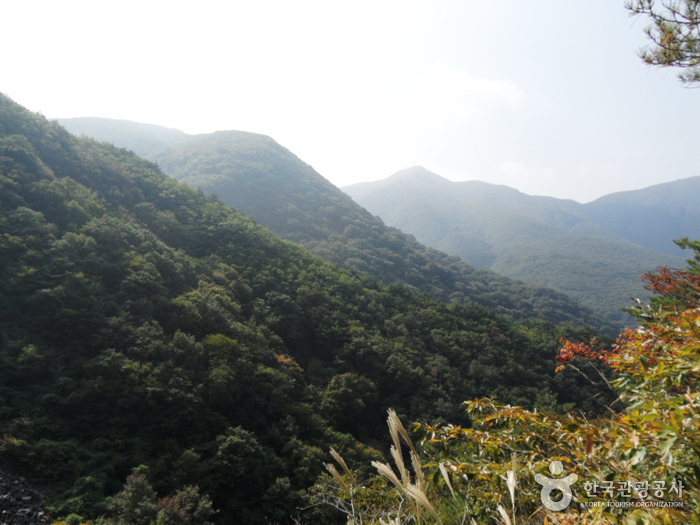
 English
English
 한국어
한국어 日本語
日本語 中文(简体)
中文(简体) Deutsch
Deutsch Français
Français Español
Español Русский
Русский